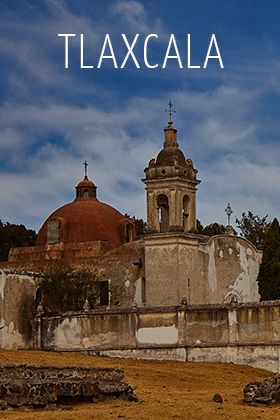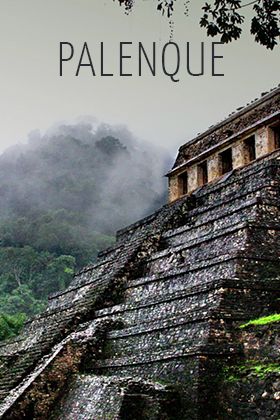Campeche- A Walled City
by: Travel by México

Campeche- A Walled City
by: Travel by México
On one side of the old village of Ah Kim Pech, the seat of the Maya kingdom, the Spanish founded the town of Salamanca de Campeche in 1531. Subsequently on October 4, 1540, Francisco de Montejo “El Mozo” would give the name of San Francisco de Campeche to the city that would become the most important port in Colonial America. This brought intense commercial traffic and the subsequent construction of houses and churches to the area. However, although the wealth of Campeche caused it to flourish for centuries, it also attracted the attention of pirates and buccaneers whose forays not only led to endless stories, but led to the creation of impregnable fortifications that today, distinguish Campeche.
The Declaration of the city of Campeche as a World Heritage, is a tribute to the legacy left by the generations of people who built, loved and respected the city. It also reflects the result of an effort begun two decades ago by the government of Campeche, to conserve and value the works of historical architecture in this town on the northwest coast of the state of the same name.
Campeche retains the colonial architectural style of the 16th century, pulsating with living legends in each of its streets, stately homes, churches, forts, strongholds and bastions.
Within the walled city (the historic downtown), one of the best preserved in Mexico, there are the representative houses of the colonial period, with gorgeous stately gates and windows. Integrated in a single historical framework are five centuries of beautiful work, in the churches, cobbled streets and squares, Porfiriana architecture, the museums and buildings. The Cathedral stands with slender towers, while the picturesque church in the neighborhood of San Francisco, along with its beautiful square, breaths the distant past. It is said that in the San Francisco Church, the first religious services were held in the land of New Spain, and that the grandson of the famous conqueror Hernan Cortes was baptized there. Done in a Baroque-Solomonic style, the five altars made with carved wooden altarpieces are what distinguish the church of San Francisco, while many legends and miracles are attributed to the Black Christ carved from ebony wood in the San Roman Church.
At the famous Puerta de Tierra, meaning The Door to Land, one of the four entrances to the old walled city of Campeche, there is a show of lights and sounds with simultaneous translation into English and French, where the adventures of pirates are narrated, and exciting pirate battles are recreated. Equally representative of the city is the Puerta de Mar, meaning The Ocean Door, which was recently restored to evoke the days of glory when beautiful woods passed through it to be shipped to Spain.
The San Miguel Fort stands as another silent example of the history of Campeche in its defenses against pirate attacks, preserving its moat, drawbridge, watchtowers and cannon. Having been converted into a museum, the fort is proudly distinguished by the house of the King’s Lieutenant, and the museum exhibits permanent collections of pre-Hispanic and colonial pieces. On top of Bellavista Hill, sits the San Jose Fort, an ideal place to enjoy a magnificent view of the city and the calm sea. On the opposite side there is a look-out point with the imposing statue of Benito Juarez.
And if Campeche shines thanks to its unique architecture, it is the people of Campeche who shine while celebrating the festivities of carnival, complete with lit up floats, costumes and dances that last five long and intense nights. This festival is enhanced thanks to the groups that provide a unique touch of joy, as well as the chords of “Guaranducha” , whose music and dance are traditional and distinctive of the event. The carnival starts with the representative burning of Bad Moods, represented by a dummy named Juan Carnaval that, when set on fire, burns up all of the bad moods and worries of the people.
The state of Campeche retains the magic of the ancient Mayan empire in the region called Rio Bec. Among the majestic forests, there are treasures preserved in time; the ancient cities of Becan, Chicana, Xpujil and El Hormiguero. Located further south is Calakmul, the largest Mayan city discovered yet to this day, protected within the Calakmul Biosphere Reserve.
Campeche has undergone many changes over the centuries, but maintains a distinguishing charm, and has preserved intact the spirit of its colonial lineage. Thanks to the natural beauty and its many attractions, combined with the friendliness and warmth of its people, Campeche is a place know for its rich history and its welcoming hospitality. Come to Campeche.



















